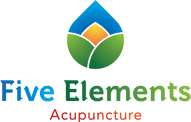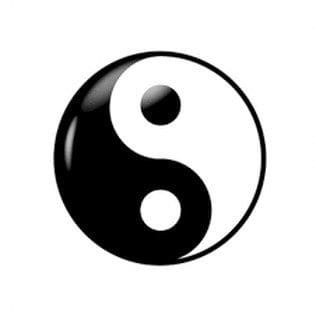WHO official position
Summary
In 2003 World Health Organization published a report about clinical trials researching the effectiveness of acupuncture. More than one hundred indication were discussed and divided into four groups concerning the strength of existing evidence.
Introduction
It was June 1979 when World Health Organisation conducted a symposium on acupuncture in Bejing, China. Doctors who participated in this symposium created a list of 43 diseases that might benefit from acupuncture. This list however was not based on well design clinical trials with appropriate control. The need for performing such studies was mentioned.
Almost twenty years later, in 1997, National Institutes of Health published Consensus Statement, summarizing the state of knowledge drawn from clinical trial concerning acupuncture efficacy. The Authors concluded that there were “promising results showing efficacy of acupuncture in adult postoperative and chemotherapy nausea and vomiting and in postoperative dental pain” In other conditions, mostly various kinds of pain, acupuncture “might be useful as an adjunct treatment or an acceptable alternative”
One year before publication of statement mentioned above, the meeting of scientists, called WHO Consultation on Acupuncture, was organized in beautiful Italian town of Cervia. That meeting resulted in creation of official report on the effectiveness of acupuncture based on data from controlled clinical trials. The report was finally published in 2003. The results of 255 trials published before the end of 1998 or beginning of 1999 were included.
Indications
Diseases, symptoms or conditions for which acupuncture has been proved – through controlled trials—to be an effective treatment:
-
Adverse reactions to radiotherapy and/or chemotherapy
-
Allergic rhinitis (including hay fever)
-
Biliary colic
-
Depression (including depressive neurosis and depression following stroke)
-
Dysentery, acute bacillary
-
Dysmenorrhoea, primary
-
Epigastralgia, acute (in peptic ulcer, acute and chronic gastritis, and gastrospasm)
-
Facial pain (including craniomandibular disorders)
-
Headache
-
Hypertension, essential
-
Hypotension, primary
-
Induction of labour
-
Knee pain
-
Leukopenia
-
Low back pain
-
Malposition of fetus, correction of
-
Morning sickness
-
Nausea and vomiting
-
Neck pain
-
Pain in dentistry (including dental pain and temporomandibular dysfunction)
-
Periarthritis of shoulder
-
Postoperative pain
-
Renal colic
-
Rheumatoid arthritis
-
Sciatica
-
Sprain
-
Stroke
-
Tennis elbow
Diseases, symptoms or conditions for which the therapeutic effect of acupuncture has been shown but for which further proof is needed:
-
Abdominal pain (in acute gastroenteritis or due to gastrointestinal spasm)
-
Acne vulgaris
-
Alcohol dependence and detoxification
-
Bell’s palsy
-
Bronchial asthma
-
Cancer pain
-
Cardiac neurosis
-
Cholecystitis, chronic, with acute exacerbation
-
Cholelithiasis
-
Competition stress syndrome
-
Craniocerebral injury, closed
-
Diabetes mellitus, non-insulin-dependent
-
Earache
-
Epidemic haemorrhagic fever
-
Epistaxis, simple (without generalized or local disease)
-
Eye pain due to subconjunctival injection
-
Female infertility
-
Facial spasm
-
Female urethral syndrome
-
Fibromyalgia and fasciitis
-
Gastrokinetic disturbance
-
Gouty arthritis
-
Hepatitis B virus carrier status
-
Herpes zoster (human (alpha) herpesvirus 3)
-
Hyperlipaemia
-
Hypo-ovarianism
-
Insomnia
-
Labour pain
-
Lactation, deficiency
-
Male sexual dysfunction, non-organic
-
Ménière disease
-
Neuralgia, post-herpetic
-
Neurodermatitis
-
Obesity
-
Opium, cocaine and heroin dependence
-
Osteoarthritis
-
Pain due to endoscopic examination
-
Pain in thromboangiitis obliterans
-
Polycystic ovary syndrome (Stein–Leventhal syndrome)
-
Postextubation in children
-
Postoperative convalescence
-
Premenstrual syndrome
-
Prostatitis, chronic
-
Pruritus
-
Radicular and pseudoradicular pain syndrome
-
Raynaud syndrome, primary
-
Recurrent lower urinary-tract infection
-
Reflex sympathetic dystrophy
-
Retention of urine, traumatic
-
Schizophrenia
-
Sialism, drug-induced
-
Sjögren syndrome
-
Sore throat (including tonsillitis)
-
Spine pain, acute
-
Stiff neck
-
Temporomandibular joint dysfunction
-
Tietze syndrome
-
Tobacco dependence
-
Tourette syndrome
-
Ulcerative colitis, chronic
-
Urolithiasis
-
Vascular dementia
-
Whooping cough (pertussis)
Diseases, symptoms or conditions for which there are only individual controlled trials reporting some therapeutic effects, but for which acupuncture is worth trying because treatment by conventional and other therapies is difficult:
-
Chloasma
-
Choroidopathy, central serous
-
Colour blindness
-
Deafness
-
Hypophrenia
-
Irritable colon syndrome
-
Neuropathic bladder in spinal cord injury
-
Pulmonary heart disease, chronic
-
Small airway obstruction
Diseases, symptoms or conditions for which acupuncture may be tried provided the practitioner has special modern medical knowledge and adequate monitoring equipment:
-
Breathlessness in chronic obstructive pulmonary disease
-
Coma
-
Convulsions in infants
-
Coronary heart disease (angina pectoris)
-
Diarrhoea in infants and young children
-
Encephalitis, viral, in children, late stage
-
Paralysis, progressive bulbar and pseudobulbar
Described report is the only official WHO opinion about the effectiveness of acupuncture. Nevertheless, the level of evidence existing in 1998 was not high. The Authors included findings from Chinese trials which were not evaluated as highly reliable. For that reason the report and acupuncture itself was criticized by many scholars.
The Authors of first WHO report shall and will be remembered forever as brave scientists who dared to prepare wide review of evidence based data concerning the method which was not thought of as “scientific”. Their work was literally groundbreaking and begun a revolution in the perception of acupuncture. The amount of well-designed, published randomized controlled trials on acupuncture started growing rapidly in XXI c. During last fifteen years the results of many RCTs were published, as well as metaanalyses of the effectiveness of acupuncture in the treatment of various diseases. Existing level of evidence is much higher than in 1999.
This website is designed to show current available evidence concerning the effectiveness, safety and economic evaluation of acupuncture.

